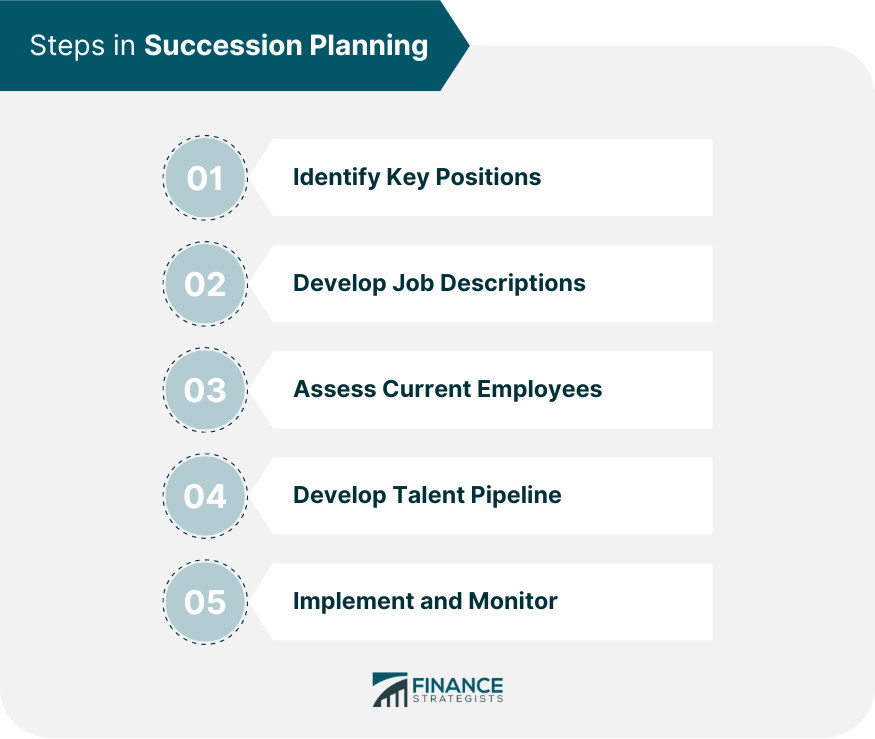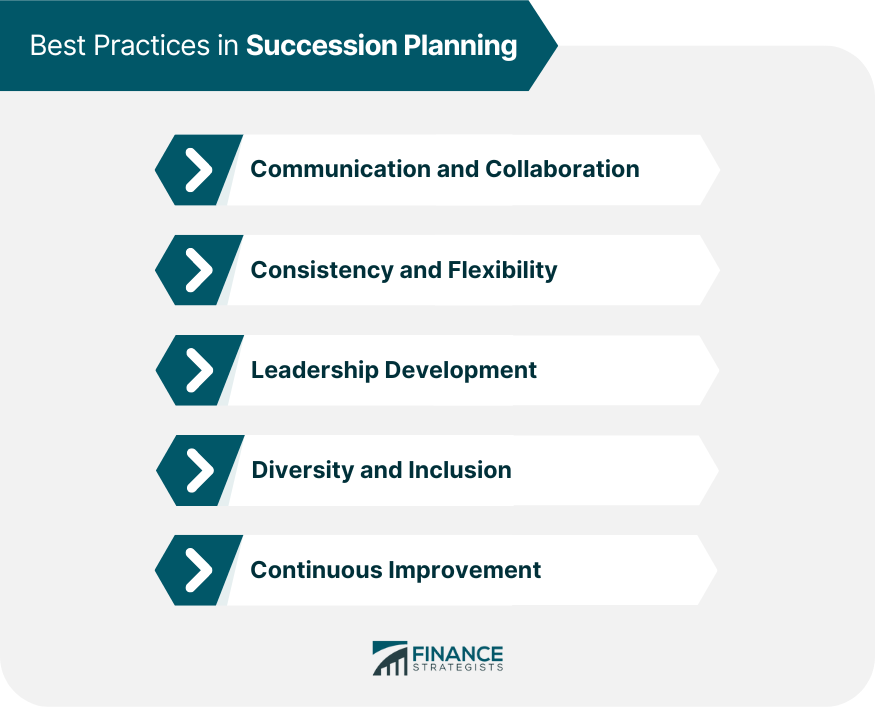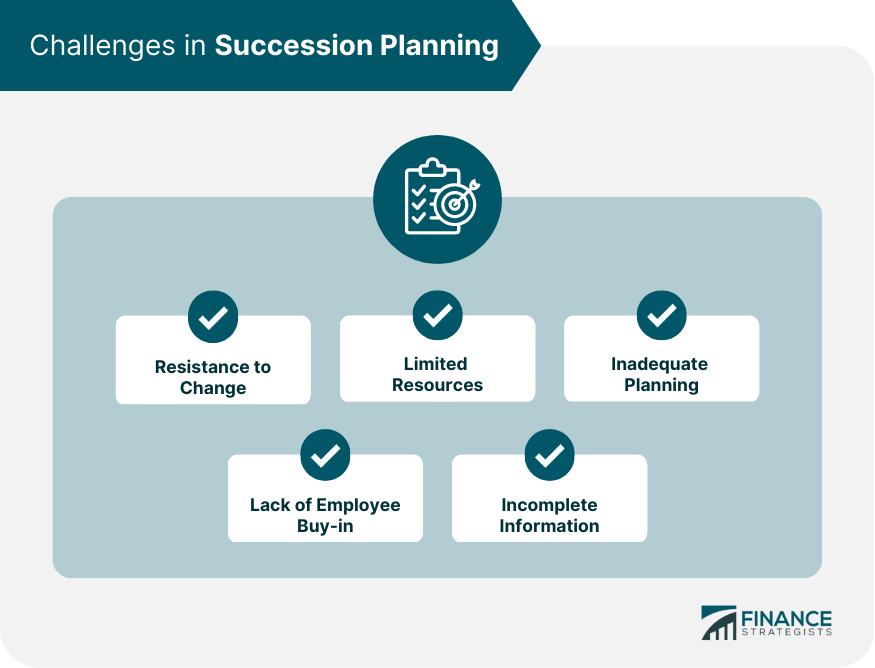Succession planning is a critical process that ensures the continuity and sustainability of an organization. It involves identifying key positions and developing a talent pipeline to ensure that the right people are in place to fill those positions when they become vacant. The future isn't inherited, it's prepared for. Succession planning bridges the gap between yesterday's leaders and tomorrow's success. Succession planning is important because it reduces the risk of disruption in an organization's operations and helps to ensure that it continues to thrive even when key leaders or employees leave. The first step in succession planning is identifying the key positions within an organization. These positions are typically those that are critical to the organization's success, such as executive leadership, key managers, and technical experts. Identifying these positions allows organizations to focus their succession planning efforts where they will have the greatest impact. Once key positions have been identified, the next step is to develop job descriptions that outline the skills, knowledge, and experience required to perform these roles effectively. Job descriptions should be detailed and include specific performance expectations, key responsibilities, and required qualifications. This information is used to guide recruitment efforts and to ensure that employees are prepared to step into these roles when necessary. After developing job descriptions, the next step is to assess current employees to determine their readiness to assume key positions. This involves evaluating employees' skills, knowledge, and experience in relation to the requirements outlined in the job descriptions. This information helps organizations identify gaps in their talent pipeline and develop strategies to address those gaps. Based on the results of the employee assessment, organizations can develop a talent pipeline to prepare employees for key positions. This may involve providing training and development opportunities to build skills, knowledge, and experience, as well as offering mentoring and coaching to help employees grow and develop professionally. Finally, organizations must implement their succession plan and monitor its effectiveness over time. This involves regularly reviewing progress, assessing the effectiveness of development activities, and making adjustments to the plan as needed. Monitoring the plan ensures that organizations remain on track and are prepared to fill key positions when they become vacant. Successful succession planning requires communication and collaboration across the organization. This means involving key stakeholders in the planning process, communicating the plan to all employees, and providing regular updates on progress. Collaboration is essential for developing a comprehensive plan that meets the needs of the organization and its employees. Succession planning should be consistent and flexible. Consistency ensures that the plan is applied fairly and consistently across the organization, while flexibility allows organizations to adapt the plan as needed to address changing circumstances. This includes regularly reviewing and updating job descriptions, performance expectations, and development activities. Effective succession planning requires leadership development at all levels of the organization. This means identifying and developing future leaders at all levels, from entry-level positions to executive leadership. This ensures that the organization has a strong leadership pipeline that can sustain its operations over the long term. Succession planning should promote diversity and inclusion within the organization. This means identifying and developing employees from a variety of backgrounds and perspectives, and ensuring that all employees have equal access to development opportunities. Promoting diversity and inclusion not only strengthens the organization's talent pipeline but also fosters a more inclusive and innovative culture. Finally, succession planning should be a continuous improvement process. Organizations should regularly evaluate the effectiveness of their plan and make adjustments as needed to ensure that it remains relevant and effective over time. This means staying up-to-date with industry trends and best practices and leveraging technology and data to support planning efforts. One of the biggest challenges in succession planning is resistance to change. Employees may be resistant to changes in their roles or responsibilities, or may be hesitant to pursue development opportunities for fear of failure or the unknown. Organizations can address this challenge by fostering a culture of learning and growth, providing support and resources to employees, and communicating the benefits of succession planning. Another challenge in succession planning is limited resources. Developing and implementing a comprehensive succession plan can be resource-intensive, and many organizations may not have the budget or staff to support this effort. To overcome this challenge, organizations can prioritize key positions and focus their resources where they will have the greatest impact, or consider partnering with external resources or consultants to support planning efforts. Inadequate planning is another common challenge in succession planning. This may involve incomplete job descriptions, lack of employee development opportunities, or failure to regularly review and update the plan. To address this challenge, organizations should prioritize planning efforts, allocate sufficient resources, and establish clear accountability and oversight for planning activities. Succession planning can be challenging if employees are not engaged and committed to the process. Employees may be skeptical about the fairness of the process, or may not see the value of pursuing development opportunities. To overcome this challenge, organizations can involve employees in the planning process, communicate the benefits of succession planning, and provide support and resources to employees as they pursue development opportunities. Finally, incomplete information can be a challenge in succession planning. Organizations may lack accurate or comprehensive data on employees' skills, knowledge, and experience, or may not have a clear understanding of the requirements of key positions. To address this challenge, organizations can invest in data collection and analysis tools, conduct regular employee assessments, and involve subject matter experts in the planning process. Succession planning is a critical process that ensures the continuity and sustainability of an organization. By following the steps outlined in this article, organizations can build a strong talent pipeline that prepares employees for key positions and reduces the risk of disruption. Best practices such as communication and collaboration, consistency and flexibility, leadership development, diversity and inclusion, and continuous improvement can help organizations overcome common challenges and ensure the success of their succession planning efforts. By prioritizing succession planning and investing in their employees' development, organizations can build a strong foundation for their future success.What Is Succession Planning?
Steps in Succession Planning

Identifying Key Positions
Developing Job Descriptions
Assessing Current Employees
Developing Talent Pipeline
Implementing and Monitoring Succession Plan
Best Practices in Succession Planning

Communication and Collaboration
Consistency and Flexibility
Leadership Development
Diversity and Inclusion
Continuous Improvement
Challenges in Succession Planning

Resistance to Change
Limited Resources
Inadequate Planning
Lack of Employee Buy-in
Incomplete Information
The Bottom Line
Succession Planning FAQs
Succession planning is the process of identifying key positions within an organization and developing a talent pipeline to ensure that the right people are in place to fill those positions when they become vacant. It is important for organizations because it reduces the risk of disruption in an organization's operations and helps to ensure that it continues to thrive even when key leaders or employees leave.
The steps involved in succession planning include identifying key positions, developing job descriptions, assessing current employees, developing a talent pipeline, and implementing and monitoring the succession plan.
Best practices for effective succession planning include communication and collaboration, consistency and flexibility, leadership development, diversity and inclusion, and continuous improvement.
Some challenges that organizations may face when implementing a succession plan include resistance to change, limited resources, inadequate planning, lack of employee buy-in, and incomplete information.
Organizations can overcome challenges in succession planning by fostering a culture of learning and growth, prioritizing planning efforts, investing in data collection and analysis tools, involving employees in the planning process, and communicating the benefits of succession planning.
True Tamplin is a published author, public speaker, CEO of UpDigital, and founder of Finance Strategists.
True is a Certified Educator in Personal Finance (CEPF®), author of The Handy Financial Ratios Guide, a member of the Society for Advancing Business Editing and Writing, contributes to his financial education site, Finance Strategists, and has spoken to various financial communities such as the CFA Institute, as well as university students like his Alma mater, Biola University, where he received a bachelor of science in business and data analytics.
To learn more about True, visit his personal website or view his author profiles on Amazon, Nasdaq and Forbes.















